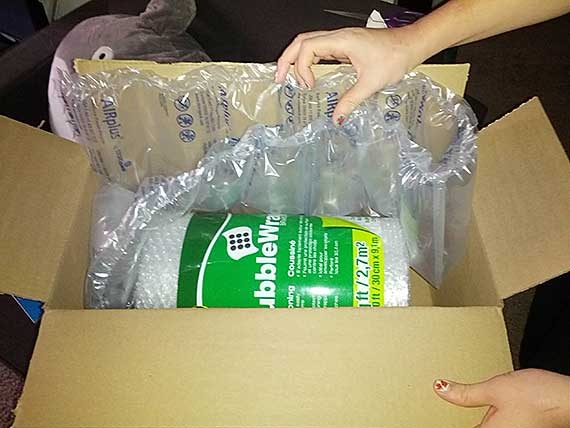Amazon, Starbucks and other large corporations could do a lot more to reduce cardboard and plastic.
I do a lot more online shopping these days. In my case, it is a symptom of having a baby. It is a lot more convenient to order products online than do trips to the store with the baby in tow.
But I am really shocked by how much wasteful packaging comes with ordering packages online. Like many people, I do the majority of online shopping through Amazon. It has become the de facto online store for everyone’s shopping needs.
Fifty percent of the time the products are delivered with a gratuitous amount of cardboard and plastic. One example is a product that was delivered in a box within a larger box. For the life of me, I couldn’t see the point of the larger box. Once I ordered a bottle of detergent – it came in a box five times its size, wrapped inside reams and reams of plastic air-filled bags.
The cardboard boxes I recycle, but the plastic I can’t. I often feel disgusted that my choice to shop this way produces such waste.
As a nation we produce millions of tons of waste a year. In 2013, Americans generated 254 million tons of trash, according to the Environmental Protection Agency. About 34 percent of this is recycled. Although recycling rates have been on the rise since the 1960s, a massive amount of trash still goes into landfills.
Ashley Robinson, a spokeswoman for Amazon, said in an email that while the packaging is intended to protect customer orders from damage during fulfillment and delivery, “we do recognize improvements can be made and very much rely on customer feedback to help us make adjustments.”
The Seattle-based company has achieved strong growth over the past couple of years. Net sales increased 31 percent to $30.4 billion in the second quarter, compared with $23.2 billion in the second quarter of 2015. As it grows and expands internationally, Amazon will generate even more waste. The spokeswoman said the company eliminated 36,000 tons of excess packaging in 2015.
Like many corporations of its size, Amazon has a sustainability mission statement. On its website, Amazon says it is “always driving improvements in the sustainability of packaging” across its supply chain. It says it promotes easy-to-open, 100 percent recyclable packaging and shipping products in their own packages without additional shipping boxes.
As if often the case, what companies say in their sustainability mission is not often the reality of what they do in practice.
I don’t want to solely pick on Amazon. I chose the company because of its popularity and strong growth in the online shopping sector. There are many other corporations that could do a lot more to reduce waste.
Take Starbucks. The ubiquitous coffee chain produces waste by serving drinks in paper cups with plastic lids. In the U.S., coffee shops often serve drinks in disposable cups even if customers are drinking inside the shop. In other countries, such as Germany, customers are served drinks in ceramic cups if they stay in the store, cutting back on waste. I don’t see why the practice should not be the same in the U.S.
Americans have gotten used to a throw away culture. Sustainable packaging practices, or not using disposable packaging at all, is a concept that still needs to catch on. Companies can do a lot more to promote reducing waste. It is, after all, what more consumers are starting to expect.



